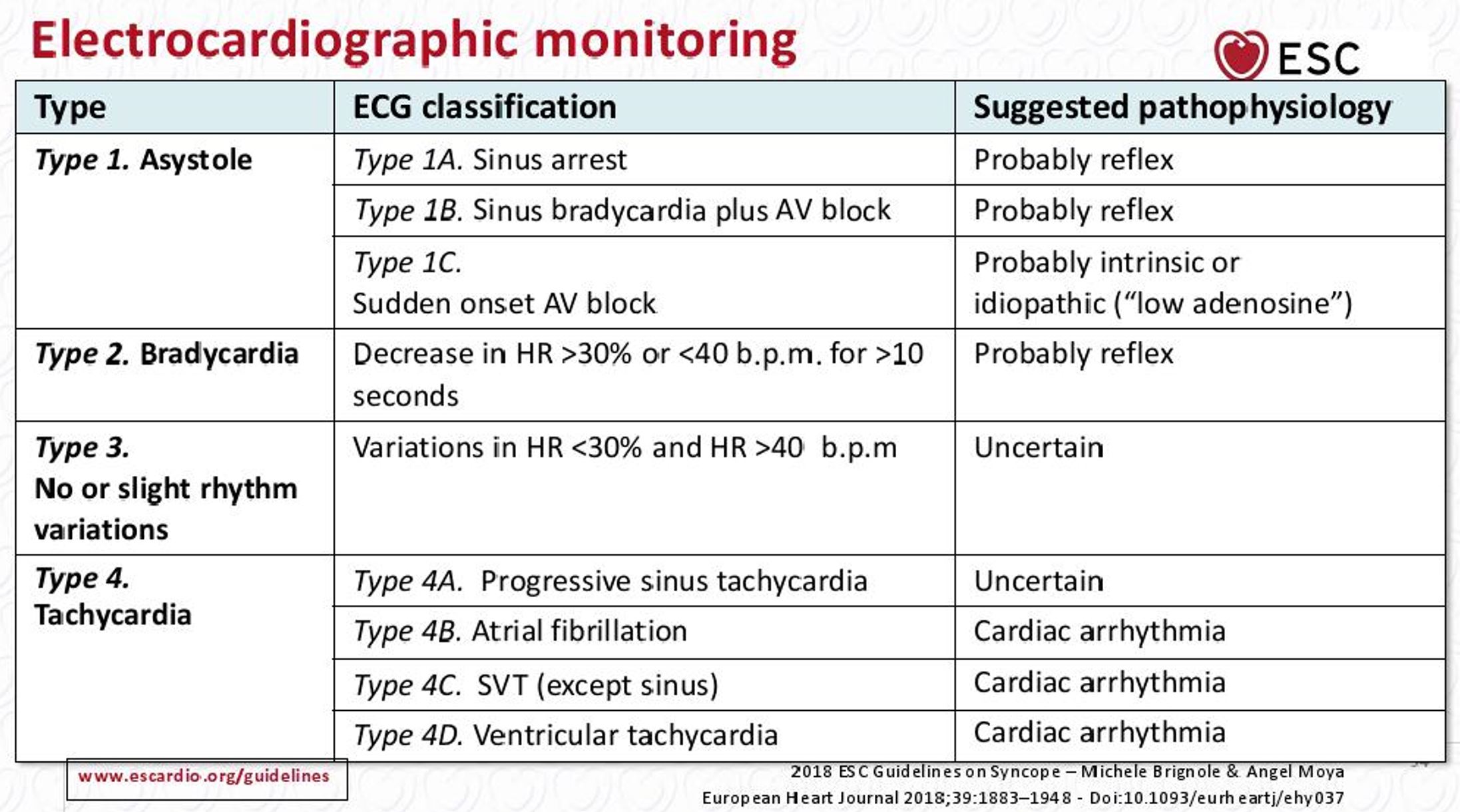Paroxysmal AV block Implantable Loop Recorder
Implantable Loop Recorder
- Implantable loop recorders are useful tools as they help correlate electrical tracings with the patients symptoms during an acute event.
- By giving an inkling of the etiology of the syncope, it helps guide therapy strategies, such as adopting permanent stimulation devices in patients with paroxysmal AV block.[1]
- According to the European Society of Cardiology, the indication for implantable loop recorders are as follows :
- In the early phase of evaluation in patients with recurrent syncope of uncertain origin, absence of high risk criteria and a high likelihood od recurrence within the battery life of the device/
- In patients with suspected or certain reflex syncope presenting with frequent or severe syncopal episodes
- In patients whom epilepsy was suspected but the treatment has proven ineffective.
- In patients with unexplained falls. "ESC Guidelines on Syncope (Diagnosis and Management of)".
- The ISSUE (International Study on Syncope of Unknown Etiology) study conducted by Brignole et al monitored 198 patients with an implantable loop recorder and classified the first syncope event following implantation.
- The ISSUE classification has pathophysiological implications in terms of the event being neutrally mediated (type 1A or type 1B or type 2), due to an intrinsic conduction defect (type 1C), secondary to orthostatic hypotension (type 4A) or a primary cardiac arrhythmia (types 4B, 4C or 4D).[2]

- The ISSUE 2 study (characterized by a frequently injured elderly population with a history of recurrent syncope) demonstrated the importance of implantable loop recorders (ILR) as a diagnostic modality by showing that the recurrence rate in syncope patients treated with ILR based therapy was much lower than those treated with no-specific therapy.
- In addition, a recurrence rate of 5% was noted in those treated with cardiac pacing.[3]
2018 ACC/AHA/HRS Guideline on the Evaluation and Management of Patients With Bradycardia and Cardiac Conduction Delay:Recommendation for Implantable Cardiac Monitor
| Recommendation for Implantable Cardiac Monitor |
| "1. In patients with infrequent symptoms (>30 days between symptoms) suspected to be caused by bradycardia, longterm ambulatory monitoring with an implantable cardiac monitor (ICM) is reasonable if initial noninvasive evaluation is nondiagnostic.(Level of Evidence: C-LD)[4] " |
- An Implantable Cardiac Monitor is almost exclusively used in the diagnosis of bradycardia related disorders such as high-grade atrioventricular block, sinus node dysfunction and neurocardiogenic syncope with predominant cardio-inhibitory component).
- Through this prolonged monitoring (up to 3 years) can help correlate bradycardia conduction disorders with symptoms[4].
- ↑ Guerrero-Márquez FJ, Arana-Rueda E, Pedrote A (2016). "Idiopathic Paroxysmal Atrio-Ventricular Block. What is The Mechanism?". J Atr Fibrillation. 9 (3): 1449. doi:10.4022/jafib.1449. PMC 5368548. PMID 28496928.
- ↑ Brignole M, Moya A, Menozzi C, Garcia-Civera R, Sutton R (2005). "Proposed electrocardiographic classification of spontaneous syncope documented by an implantable loop recorder". Europace. 7 (1): 14–8. doi:10.1016/j.eupc.2004.11.001. PMID 15670961.
- ↑ Brignole M, Sutton R, Menozzi C, Garcia-Civera R, Moya A, Wieling W; et al. (2006). "Early application of an implantable loop recorder allows effective specific therapy in patients with recurrent suspected neurally mediated syncope". Eur Heart J. 27 (9): 1085–92. doi:10.1093/eurheartj/ehi842. PMID 16569653.
- ↑ 4.0 4.1 Kusumoto FM, Schoenfeld MH, Barrett C, Edgerton JR, Ellenbogen KA, Gold MR; et al. (2019). "2018 ACC/AHA/HRS Guideline on the Evaluation and Management of Patients With Bradycardia and Cardiac Conduction Delay: Executive Summary: A Report of the American College of Cardiology/American Heart Association Task Force on Clinical Practice Guidelines, and the Heart Rhythm Society". J Am Coll Cardiol. 74 (7): 932–987. doi:10.1016/j.jacc.2018.10.043. PMID 30412710.